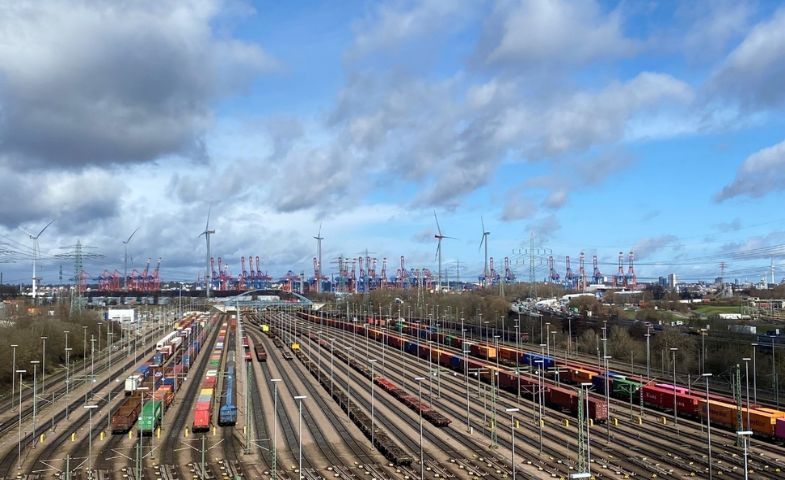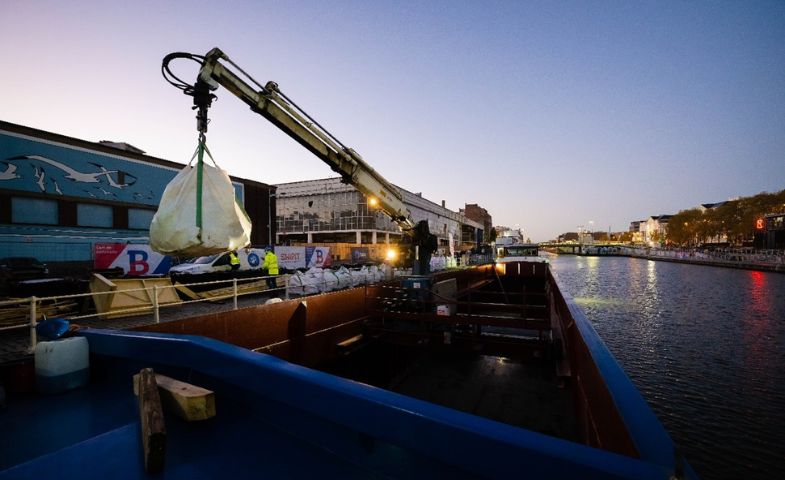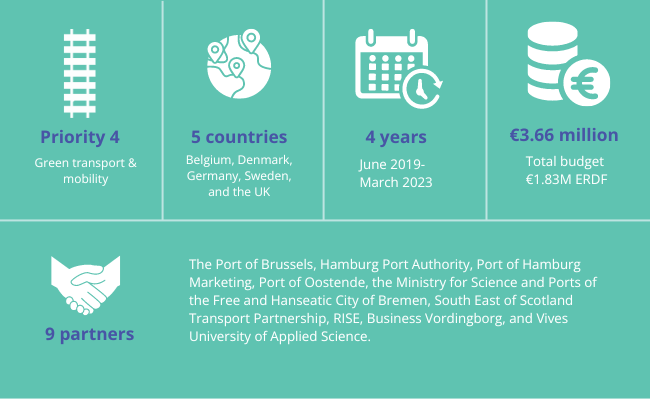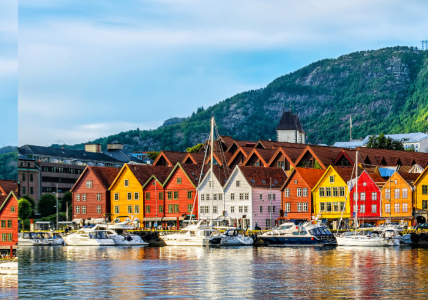North Sea CONNECT showcases innovative transport network solutions supporting intermodal mobility in the North Sea Region.
The North Sea Region is one of Europe's most important logistics zones, and it is housing the largest seaports and intermodal transport hubs. To boost the market potential of these locations, efficient, smart, and ecological transport networks are critical. That's where the North Sea Connect project comes in.
Transport networks "behind" the Core Network
Led by the Port of Hamburg Marketing, North Sea CONNECT provided new, tested solutions for smart urban city logistics, smart port operation, and better multimodal integration.
These solutions help put a stronger focus on the comprehensive transport network "behind" the TEN-T Core Network, the major transport axes across Europe. The efficiency of transport flows relies not only on the major junctions but also on their hinterlands.
In the future, technology and innovation will play a vital role in ensuring efficient and sustainable transport of goods. Our pilots show case examples of how this can be done.
Port of Hamburg: Enhancing rail links
In the framework of North Sea CONNECT, the Hamburg Port Authority further developed their existing traffic management system for rail transport called transPORT rail.
This IT tool provides an effective interface for freight and transport data. A module within this tool allows users to better plan the slots of the trains at the terminals, making rail transport in Europe’s biggest rail port smarter and more efficient. The users of this module are mainly (shunting) operators, rail transport companies, and (un)loading stations. There are considerations to further expand this traffic management system for rail transports further to the hinterland transport activities.
The other partners participated in a live demonstration in Hamburg and are considering implementing parts of their system in their ports.

Logistics are complicated at the Port of Hamburg. Photo: North Sea CONNECT.
Brussels: Improved logistics for the building sector
Another exciting development was the smart urban logistics at the Port of Brussels. The Brussels Construction Consolidation Centre (BCCC) enables sustainable urban distribution of building materials, reducing the environmental impact of transport while also improving the efficiency of logistics operations.
The Port of Brussels successfully carried out the "Smart City Port Distribution" pilot, addressing challenges related to efficient transport of goods between seaports and their hinterland, as well as mobility of goods within urban areas.
Brussels receives a large portion of its building materials from the Netherlands or Antwerp. This is a big part o the reason why the city is facing heavy congestion and goods logistic challenges. From the 16,000 trucks entering the city each day, around half are transporting construction material. The pilot explored waterway transport to improve links between North Sea ports and their hinterland connections, reducing reliance on trucks and alleviating congestion.
We explored an extension of existing logistics centres from the north to the south of Brussels, using the Antwerp-Brussels-Charleroi Canal. The aim was to optimise the supply chain and city distribution for construction sites, focusing on unitised building material supply (pallets, big bags, mobile boxes, etc.) and the last mile. This set-up will make it possible to supply most part of the city in a consolidated way, making use of the waterway. During the project lifetime, around 15% of cargo handling was shifted to sustainable modes.
North Sea CONNECT has given us the opportunity to improve sustainable city distribution in a transnational and connecting way. The experience and expertise from the consortium have truly enhanced our project, which can now serve as an example for other port cities in the North Sea Region.
The ultimate goal of the BCCC is to provide Brussels construction sites with a logistical platform for consolidating material deliveries.
To achieve this goal, the project aims to test the operation of such a construction consolidation centre and its digital solution, measuring the societal impact (mobility, economic, environmental and social) as well as the impact on improving the performance of the construction sites' supply chain.
Several construction sites of different sizes and types, as well as the physical and digital platforms for consolidating operations, thus form the test environment in which (in particular) the consolidated procurement methods will be tested.

A lot of construction goes on in Brussels and the city has to import the building material. Photo: North Sea CONNECT.
Port of Oostende: Autonomous navigation
This initiative wants to demonstrate autonomous (un)loading by using a digital twin simulation platform. VIVES has been working with digital twin technology over the past years and wants to leverage its expertise to show a proof of concept for this autonomous task in the Port of Oostende. A specific location (Vlotdok) has been selected by the port because of the location between incoming/outgoing sea vessels and the IWT connections to local and European destinations.
Autonomous barges coming from the inland waterways can nicely complement this as part of a smart automated transport process to transition towards more sustainable logistics. It became increasingly clear during the project that ports have great challenges, this spatially but also digitally.
Collaboration for smooth logistics
To ensure smooth logistics, collaboration between various parties is necessary, as shown by the five pilots conducted in different ports across the North Sea Region. The pilots focused on optimising flows and available areas through digitalisation and data sharing.
Despite the variation in the size of the involved ports, they must collaborate to achieve smoother logistics. The four ports demonstrated how digitalisation and data sharing can lead to optimised container flow, handling of railway goods, and better utilisation of a port area.
While the Port of Brussels is an inland port, the Ports of Oostende, Hamburg, and Gothenburg are mainly seaports with connections to the hinterland through rivers and canals.
The Port of Vordingborg developed strategies for how to benefit from the Fehmarn Belt fixed link by better integration into the German transport and logistics network.
Together through turbulent times
Despite the Covid-19 pandemic outbreak mid-project, which caused delays and required us to adjust to the new conditions, our partnership can look back at a project that reached important milestones and moved things forward in the realm of logistics.
In turbulent times, we have successfully mastered the challenges and further consolidated the North Sea Region as an important logistics region in Europe. By integrating efficient, intelligent and environmentally friendly transport networks, we have further developed the region's market potential. With a holistic approach, we optimised transport flows, promoted continuous learning and created new tools for smart intermodal growth with a transnational perspective.
Moving on from here
The work of North Sea CONNECT is being continued and further developed in other projects, including Green Supply Chain (supported by the Interreg North Sea Programme) and Blue Supply Chain (funded by the Baltic Sea Region Programme).
Aspects continued under Green Supply Chain include increased visibility of green logistics solutions using innovative ITS applications and supporting the decision-making process for greener transport and logistics chains. Aspects continued under Blue Supply Chain include pushing green combined transport solutions between Baltic ports and their hinterland, through the example of a rail ferry connection.
Top three project highlights
Cargo handling with sustainable modes
The Brussels pilot created a modal shift from road to railway and waterways by 15% within the project period alone.
Cost savings
Across its pilots, North Sea Connect resulted in 25% cost savings through shifting to more sustainable modes.
Smart intermodality tools
Smart digital tools to foster intermodality are a strong legacy from the project.
North Sea CONNECT: key facts

Learn more
Learn more about North Sea CONNECT at the project's website.
Get in touch
If you would like to talk to the people behind the project, feel free to contact the project manager Johannes Betz at betz@hafen-hamburg.de, phone +49 15155890014.
About the author

Johannes Betz is a Project Manager at Port of Hamburg Marketing, where he has been working since 2015.
He has international work experience in logistics and transport management and is currently leading some of the European projects in the transport sector with his colleagues.



